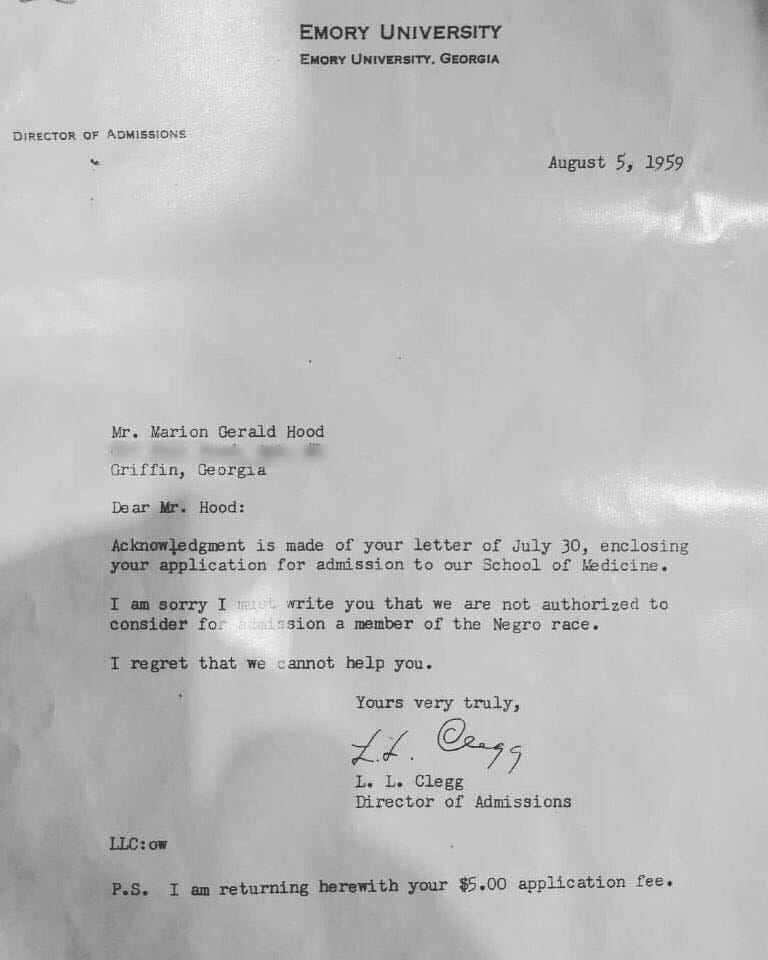There is no such thing as "color blindness"
Affirmative Action and DEI are justified and necessary
Issue #536 The Choice Monday, March 18, 2024
Today in America, over 400 years since the first captured Africans arrived in North America in 1619, some people are still insisting that “color does not matter” and that ALL raced-based laws and policies, including Diversity, Equality, and Inclusion (DEI) programs, should be eliminated.
- In 1619, the first Africans in Virginia were a group of "twenty and odd" captive persons originally from modern-day Angola. Their arrival is seen as the beginning of the history of slavery in Virginia and British colonies in North America.
- In 1787, the newly ratified U.S. Constitution considered enslaved Africans as only 3/5 of a person for congressional representation purposes.
- In 1857, in the Dred Scott v Sanford decision, the U.S. Supreme Court declared that “a negro, whose ancestors were imported into [the U.S.], and sold as slaves,” whether enslaved or free, could never be considered an American citizen.
- In 1896, in Plessy v Ferguson, the U.S. Supreme Court ruled that racial segregation laws did not violate the U.S. Constitution as long as the facilities for each race were equal in quality ("separate but equal”).
- In 1954, 58 years later, in Brown v Board of Education of Topeka, Kansas, the U.S. Supreme Court ruled that state-sanctioned segregation of public schools was a violation of the 14th Amendment and was therefore unconstitutional.
- In 1964, Congress passed the Civil Rights Act of 1964 prohibiting discrimination based on race, color, religion, sex, or national origin.
- In 1965, Congress passed the Voting Rights Act of 1965 that prohibited racial discrimination in voting.
- In 1965, President Lyndon B. Johnson signed an executive order for equal opportunities to benefit marginalized groups in the Federal government to bridge inequalities in employment and pay and redress alleged wrongs, harms, or hindrances from the past. The “Equal Opportunity Act,” also known as “affirmative action,” was also meant to promote diversity, equality, and inclusion.
It took 346 years from the landing of the first captured Africans in America until their descendants finally achieved full legal Federal protection of their civil rights.
In the last quarter of the 19th century, after the passage of the 13th, 14th, and 15th Amendments, white supremacists immediately started fighting against the rights given to previously enslaved Africans.
In the last half of the 20th century, white supremacists immediately started fighting against the integration and civil rights laws passed in the 1950s and 1960s.
Now in the 21st century, the attacks against equal rights for all continue.
- In 2010, the Supreme Court decided “Citizens United,” giving corporations an unfettered license to donate as much “dark money” as they could to political causes.
- In 2013, the Supreme Court decimated much of the 1965 Voting Rights Act, allowing states to enact severe voting suppression policies.
- Since at least 2021, many states and local jurisdictions have banned books, primarily by and about Blacks and other people of color, as well as LGBTQA+ people, and erasing or revising American history to erase or diminish anything about non-white people.
Many people are saying that race-based laws and policies like affirmative action and DEI are “reverse racism” and we should all be color-blind and treat all people the same.
However, “color blindness” means not seeing our differences in the past or in the current time.
“Color blindness” means people can continue to erase or diminish the accomplishments or even existence of anyone not white, Christian, straight, or male.
Affirmative action and DEI initiatives are not “reverse racism,” but laws and policies to try to rectify the 405 years of discrimination against Africans in America since 1619.
We have to fight against attempts to eliminate affirmative action and DEI and instead encourage efforts to make everything better and actually equal for everyone, especially those who have been deliberately and severely harmed because of their color.
The “Comments” feature is enabled for paid subscribers for “The Choice” posts. You can also discuss these facts in our community on Substack Notes. You can also read other Substack publications without subscribing to them when you join Notes.
These posts are free to read for three days after publication. To have 365/24/7 access to all our posts and podcast episodes and financially support “We Are Speaking” for no more than $5 per month, please subscribe at the paid level. You’ll receive a 7-day free trial!



